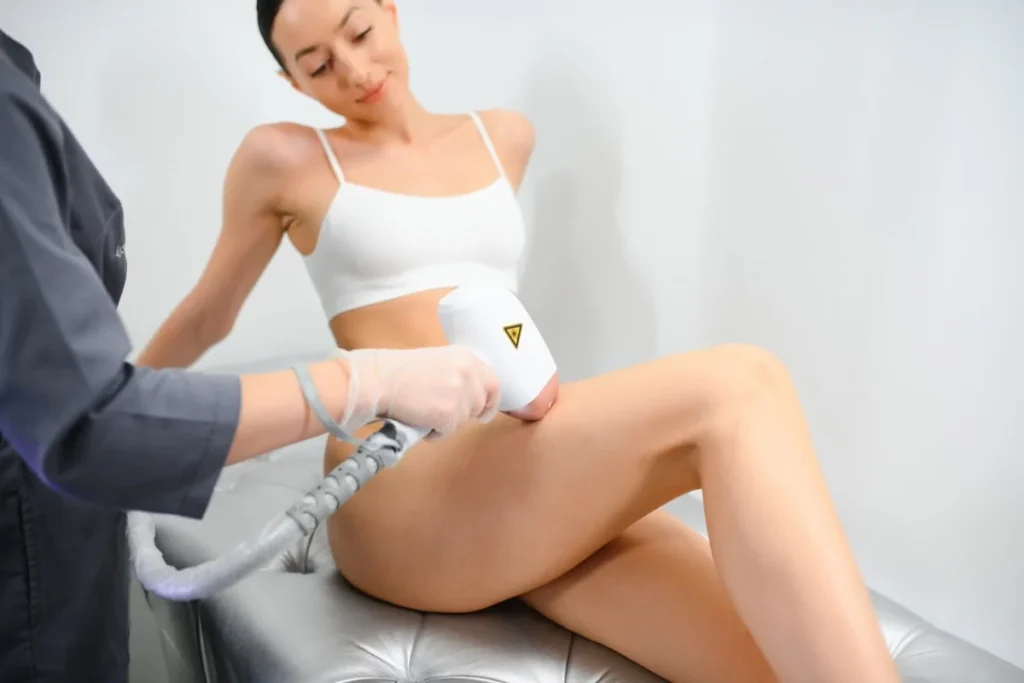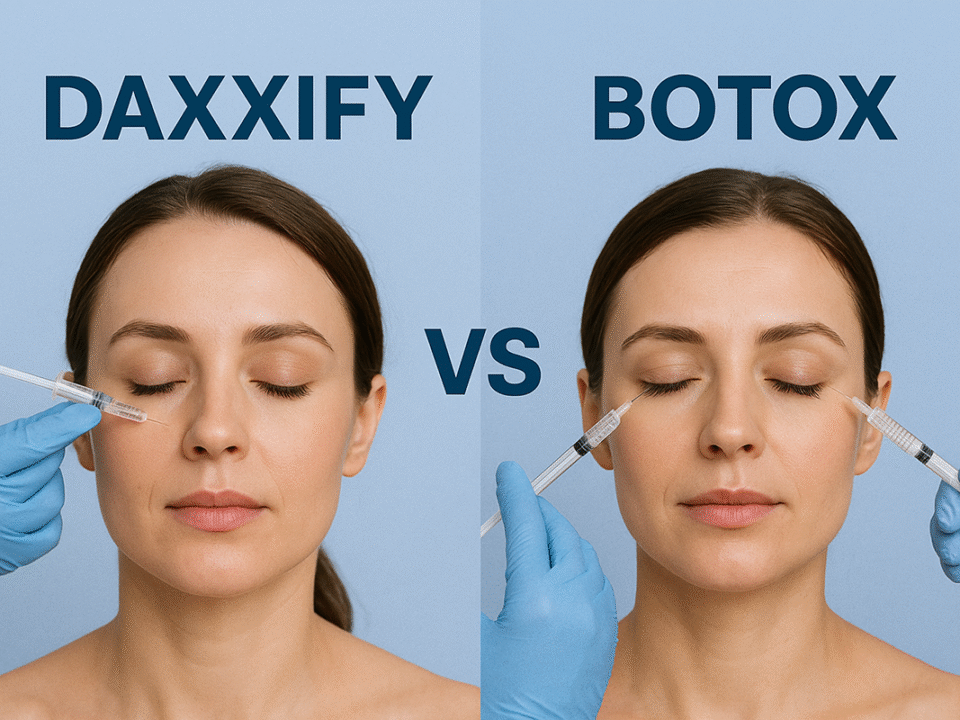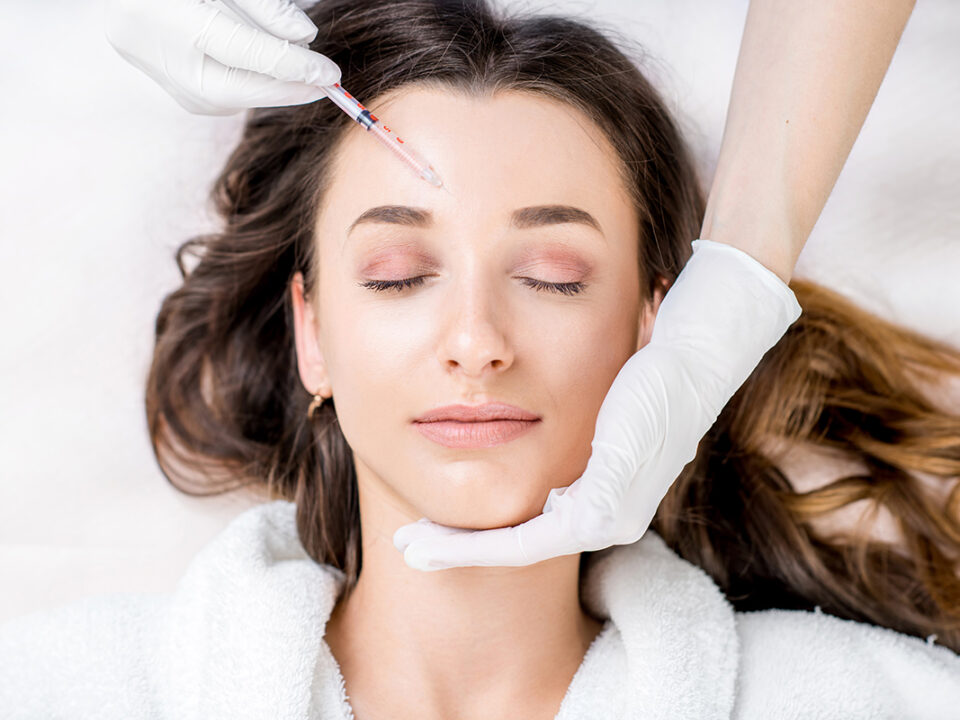
New Year’s Resolutions for Healthy Skin
September 8, 2025
How to Remove Sunspots on Your Face
October 6, 2025Traditional methods of hair removal, such as shaving, require a lot of time and provide short-term results. That is why laser hair removal is very popular as a fast and effective method with long-lasting effects to remove unwanted hair. But like any other method, laser hair removal also has its numerous advantages, disadvantages, and side effects. You need to know laser hair removal side effects and recovery before choosing it as a treatment. Join us to learn a little more about this treatment method and laser epilation side effects.
Laser Hair Removal Procedure
Most common methods of removing unwanted hair, such as shaving, waxing, or using devices like epilators and trimmers, require frequent reapplication. If you don’t have enough time or prefer to choose a long-lasting method, laser hair removal can be a better way for you.
Body laser hair removal is a long-lasting and generally very safe method of removing unwanted hair. It uses a focused beam of light to weaken or destroy the hair root. Hair contains a pigment called melanin. This pigment absorbs light. The light is converted to heat and damages the tube-shaped sacs in the skin (hair follicles). This damage causes hair growth to be delayed or stop altogether.
There are many different types of laser hair removal devices. The Candela GentleMax Pro, Diolaze XL, Lumenis LightSheer, and Nd:YAG lasers are some of the most well-known names for laser hair removal devices. Each device offers one or more specific wavelengths. Your specialist will recommend the right device for you based on your skin tone, hair type, and hair thickness. Choosing the right device has a huge impact on the outcome of your treatment and on reducing laser epilation side effects.
Minor And Common Side Effects
In most cases, the side effects of laser hair removal are temporary and limited. These complications occur immediately after the procedure and disappear within a few days.
Pain And Burning Sensation
A little pain and burning sensation are common and temporary laser epilation side effects.
It should be anticipated that the skin will have a burning sensation during treatment with the laser. The level of pain felt by one person depends on their pain threshold and the thickness and nature of their hair. With the progression in the number of sessions of laser hair removal, the pain and discomfort level reduce. This is because the number of hairs generating heat by absorption of the laser decreases, and the hair starts to be thinner.
How to reduce the pain of laser hair removal?
Some technicians use numbing creams before commencing work, and it is a great technique to ensure it is less painful. But one of the biggest secrets to reducing pain during laser hair removal is cooling the skin. The use of laser machines equipped with a cooling system is a significant factor in reducing pain from laser treatment.
Additionally, drinking plenty of water before the treatment session and avoiding caffeinated drinks such as coffee also serves to reduce pain. Finally, since sensitivity is higher during menstruation, laser hair removal will be more painful. Therefore, women are recommended to plan their sessions at another time.
Peeling, Itching, And Inflammation
Skin may become flaky or itchy in some individuals after laser hair removal. This is typically transient and disappears after a few days to a few hours. Skin inflammation can be worsened by perfumes, chemicals, and skin cosmetics. Therefore, avoid coming into contact with these chemicals on your skin. If these laser epilation side effects persist after two weeks or if inflammation and pain are excessive, contact your doctor.
How to Reduce Inflammation?
To soothe and heal the skin faster, you can use a fragrance-free moisturizer, cold compresses (ice packs), and aloe vera. Additionally, to minimize the risk of laser hair treatment side effects, avoid exposing your skin to sunlight and don’t forget to apply sunscreen.
Pigmentation Changes
One of the possible laser epilation side effects is skin discoloration. If you have fair skin, your skin may darken in some spots (hyperpigmentation). because the heat from the laser may damage the pigment-producing cells (melanocytes), causing them to produce more melanin in response, resulting in darkening and blotching of the skin.
Alternatively, if you have dark skin, the color can get lighter after laser treatment (hypopigmentation). This happens when the laser, instead of targeting the hair follicle directly, destroys the melanocytes (pigment-producing cells) as a byproduct. The cells lose their ability to produce pigment, making the skin get whitish or light-colored patches.
This laser epilation side effect is generally temporary and fades away on its own within a few days to a few months.
How to Reduce Pigmentation Changes?
In order to reduce this side effect of laser hair removal, make sure to get laser hair removal from reputable clinics. The laser equipment should be appropriate for your skin type, and the laser process must be performed by an experienced operator.
Also, post-laser, you definitely need to protect yourself from the sun with sunscreen. Skin color changes are usually temporary and will subside in a few months. So you need to be patient. You can also consult your doctor about this. Your doctor may prescribe you creams containing hydroquinone if needed to heal hyperpigmentation.
Severe And Rare Side Effects
Laser hair treatment side effects are usually minor. But in rare cases, severe side effects are possible. These rare complications often occur due to improper device settings, lack of operator expertise, or improper post-laser care. So it is best to visit reputable centers and follow the following necessary post-laser advice.
- Permanent change in skin pigmentation that is more common in patients with darker skin and those who have sun exposure either before or following treatment with a laser.
- Paradoxical hypertrichosis, or abnormal hair growth, happens in very rare situations. Within these circumstances, the laser stimulates hair growth in or adjacent to the lasered area instead of inhibiting hair. The cause of the effect is not fully understood, but it has been observed in patients with fine, light-colored hair or dark skin.
- Blistering and burning, which are typically caused by inadequate device calibration or sunlight after laser therapy.
- Skin ulceration and scarring, which are infrequent complications of laser treatment and most frequently result from severe skin burns, post-treatment infection, or excessive scratching of the lasered area. This problem is more common in people who are prone to keloid scarring.
These laser epilation side effects are rare and generally not a cause for alarm. But if you are concerned about any of them, please do make sure to talk to your doctor first before starting treatment.
Tips for Minimizing Laser Hair Removal Side Effects

If you do the following, you will likely find laser hair removal more comfortable and minimize laser epilation side effects:
- If you have lasered your bikini line, underarms, or other super-sensitive areas, then looser clothes and slow down a little on exercises so you can rest during the day.
- Keep the treated area clean and sweat-free.
- Use a sunscreen with a 30 SPF or higher before venturing outside.
- Do not scratch the lasered area.
- If you have tanned your skin, wait at least 2 to 3 months for your skin color to return to its natural color.
- Avoid sunbathing or tanning beds for at least 4 to 6 weeks after your last laser hair removal session.
- After laser hair removal, avoid using tanning creams and lotions, scrubs, and exfoliating products for a few days.
Who Should Not Have Laser Hair Removal
Since many hormonal changes occur in the body during pregnancy and the skin becomes more sensitive, laser hair removal is not recommended for pregnant women. Although there is no definitive evidence that prohibits laser hair removal for pregnant women, if you are pregnant, it is better to wait until the end of pregnancy.
In addition, those with skin diseases such as eczema or psoriasis should not use lasers in areas where there is inflammation or signs of the disease because laser epilation side effects may be more severe for these people.
Infectious diseases, such as Herpes simplex, can be transmitted through laser hair removal. So if you are facing such cases, you cannot apply laser hair removal. If you have a specific skin disease or even take a specific medication that increases the sensitivity of the skin to light, consult your doctor. Blood thinners may also cause bleeding or bruising at the treatment site.
Laser can change the color of moles or tattoos, so it should not be used in tattooed areas or places where there are suspicious moles. Ultimately, laser hair removal has no significant effect on white or very light hair and may simply be a waste of time and money.
Home Lasers Safety
Now that we know the answer to the question “What are the laser hair removal side effects?”, it’s better to know more about the safety of home laser hair removal. Home lasers are made with much less power and intensity than clinical devices and are designed to be used at home without the need for a specialist. These lasers do not pose a risk of serious burns or injury, although they are also less effective and produce slower results. While standard home devices are safe, be sure to read the instructions carefully before using them and protect your eyes from accidental direct contact with the light pulse.
Laser Hair Removal: Yes Or No
In short, laser hair removal is a safe and effective method for removing unwanted hair. All you need to do is consult a specialist before undergoing laser hair removal, and if you do not have any specific medical contraindications, you can experience the least laser epilation side effects by visiting reputable centers. Tatoyan MD Medspa guarantees you a short and high-quality treatment period by utilizing the most advanced laser devices and the best specialists.





